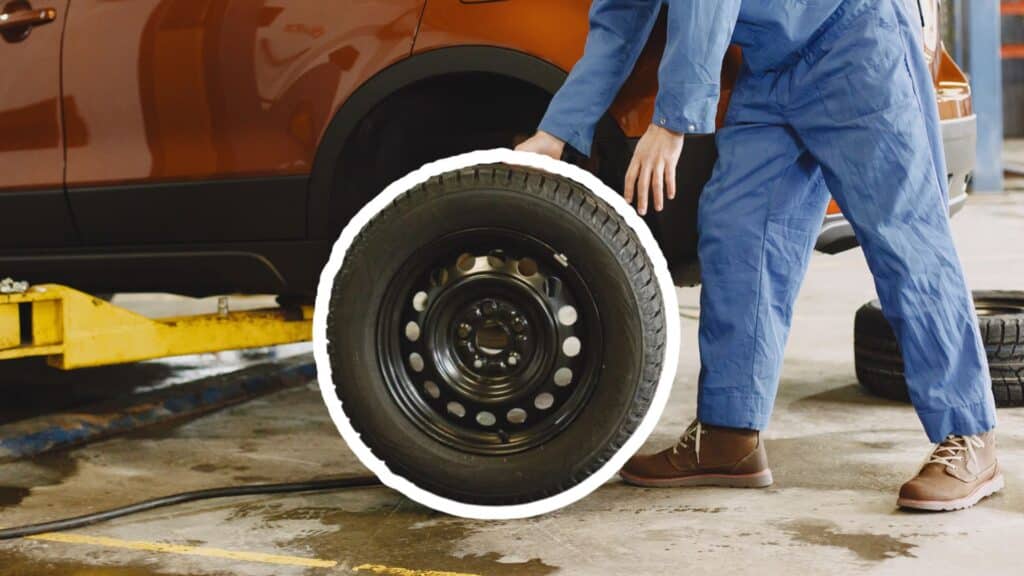Many car owners find AWD tire rotation daunting, often neglecting this vital maintenance task. You might worry about damaging your vehicle or feel unsure where to start.
But fear not! Regular AWD tire rotation is crucial for even wear, improved handling, and extended tire life.
This guide will walk you through the process step-by-step, making it easy for beginners to tackle this important task at home.
It will cover everything from understanding rotation patterns to safely lifting your vehicle and properly tightening lug nuts.
By the end of this article, you’ll have the knowledge and confidence to perform AWD tire rotation like a pro, saving money and ensuring your vehicle’s optimal performance.
What is AWD Tire Rotation and Why It’s Essential in AWD Vehicles?
What is Tire Rotation?
Tire rotation involves moving tires from one position on your vehicle to another. For AWD vehicles, this might mean moving the front tires to the rear and vice versa or rotating them diagonally. This process helps ensure even wear across all four tires, which is crucial for AWD systems.
Why AWD Vehicles Have Unique Rotation Needs
AWD Tire Dynamics: AWD systems distribute power to all four wheels, causing each tire to wear differently based on driving conditions and power allocation. Unlike front-wheel or rear-wheel drive vehicles, AWD vehicles require more attention to tire rotation to maintain even wear.
Importance of Even Wear: Tire wear is essential for maintaining consistent traction, handling, and braking performance in AWD vehicles. Uneven wear can lead to poor vehicle stability, increased fuel use, and a higher risk of tire problems.
Why Tire Rotation is Crucial for AWD Vehicles
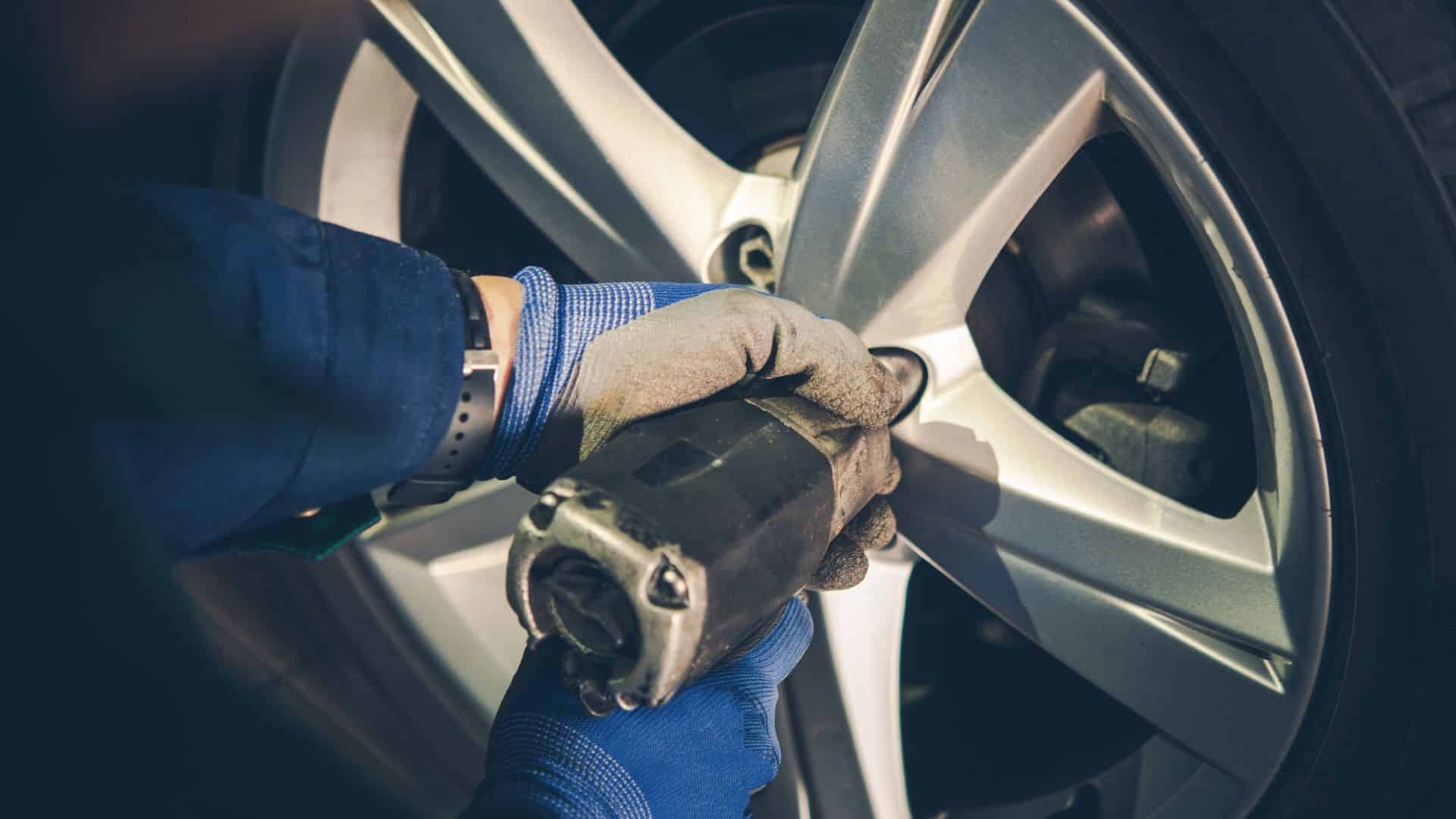
Extending Tire Life: Regular AWD tire rotation helps ensure all tires wear out at the same rate, significantly extending their overall life. This saves money and prevents premature tire replacement.
Improving Vehicle Safety: Even tire wear improves vehicle control, especially in slippery or uneven conditions. By rotating your AWD tires regularly, you maintain your vehicle’s safety and reliability, reducing the risk of tire-related incidents.
Step-by-Step Guide to DIY AWD Tire Rotation
Step 1: Gather Necessary Tools
Before diving into your AWD tire rotation, assemble these essential tools:
- Lug wrench: Your tire’s best friend for loosening and tightening lug nuts.
- Hydraulic lift or jack: The muscle that’ll raise your vehicle safely.
- Jack stands: These trusty supports keep your truck stable while you work.
- Torque wrench: The precision tool for perfectly tightened lug nuts.
Each tool plays a vital role in your DIY AWD tire rotation adventure. Consider investing in a good-quality torque wrench—a game-changer for proper lug nut tightening and overall wheel safety.
Step 2: Safety Precautions Before You Begin
Safety isn’t just a step; it’s the foundation of your AWD tire rotation process. Find a flat, level surface – your driveway or garage floor is perfect. Engage your parking brake and turn off the engine.
Think of it as putting your car to sleep before you start working on it. Once lifted, give those jack stands a firm shake to ensure they support your vehicle securely. Remember, your safety is worth more than any tire!
Step 3: Loosen Lug Nuts
Time to break those lug nuts free! Using your lug wrench, give each nut a quarter turn counterclockwise. This initial loosening while the car is still on the ground prevents the wheel from spinning freely when you lift it.
Think of it as giving the lug nuts a gentle wake-up call before the main event.
Step 4: Lift the Vehicle
Your owner’s manual is the treasure map of your vehicle’s lift points. Once you’ve found them, position your jack and start lifting. Take it slow – this isn’t a race.
Lift one side at a time, placing jack stands under the appropriate support points. Your AWD vehicle should now be ready for its tire rotation spa treatment.
Step 5: Remove and Rotate Tires
Now for the main event of your AWD tire rotation! Remove the wheels completely and set them aside.
For most AWD vehicles, you’ll use either the X-pattern (moving tires diagonally) or the Rearward cross pattern (rear tires go to the front on the same side, front tires to the opposite rear). Think of it as a carefully choreographed tire dance, each wheel finding its new home.
Step 6: Reinstall and Tighten Lug Nuts
As you place each tire in its new position, hand-tighten the lug nuts in a star or cross pattern. This ensures even pressure across the wheel.
Once all wheels are in place, use your torque wrench to tighten the lug nuts to the manufacturer’s specifications. This step is crucial – tucking your tires nicely and snugly for optimal performance.
Step 7: Lower the Vehicle
Slowly and steadily, lower your vehicle back to terra firma. It’s like gently landing a plane – smooth and controlled. Once the weight is on the tires, give each wheel a final check with your torque wrench to ensure the lug nuts are properly tightened.
Step 8: Repeat for All Tires
You’re on the home stretch! Repeat this process for any remaining wheels. By the time you’re done, each tire will have found its new temporary home, ready to share the wear and tear of your AWD adventures equally.
Remember, regular AWD tire rotation is like giving your car a balanced diet – it keeps everything running smoothly and extends the life of your tires. Happy rotating!
Different AWD Tire Rotation Patterns
1. X-Pattern
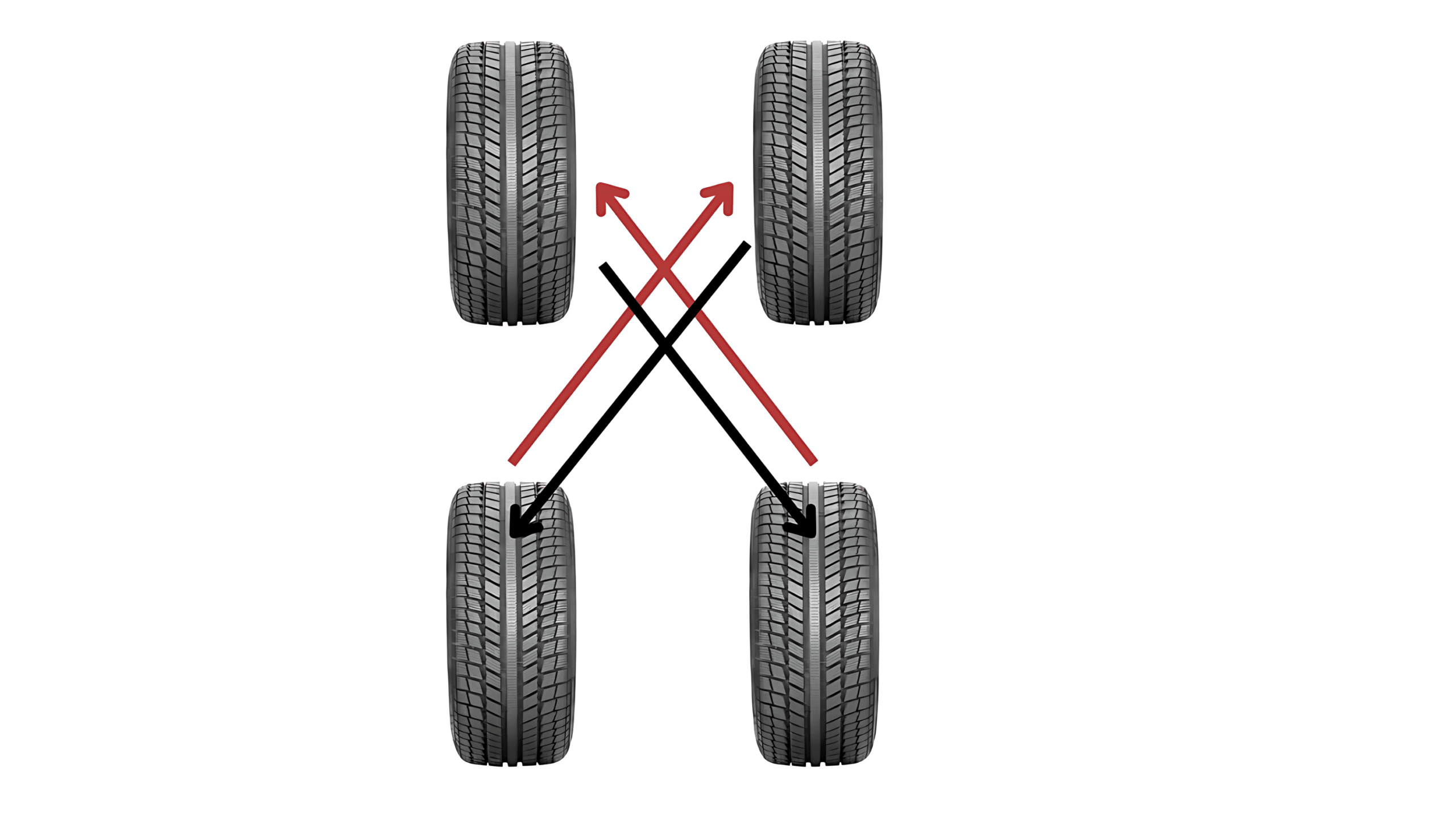
This AWD tire rotation method involves moving tires diagonally from front to rear and vice versa.
2. Rearward Cross Pattern

Front tires move straight back, while rear tires move to the opposite front positions.
3. Forward Cross Pattern
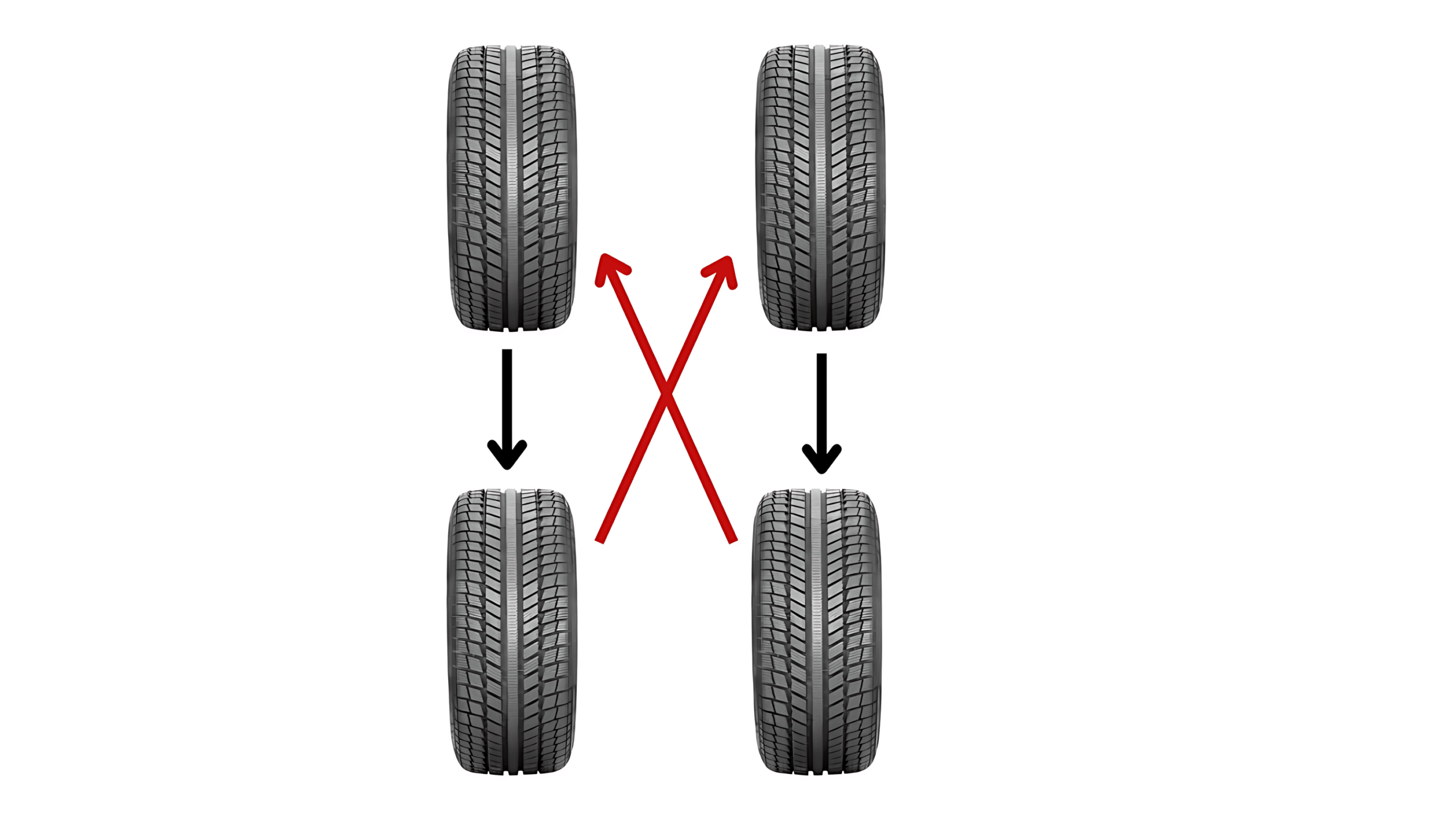
Rear tires move straight forward, while front tires move to the opposite rear positions.
4. Side-to-Side Pattern
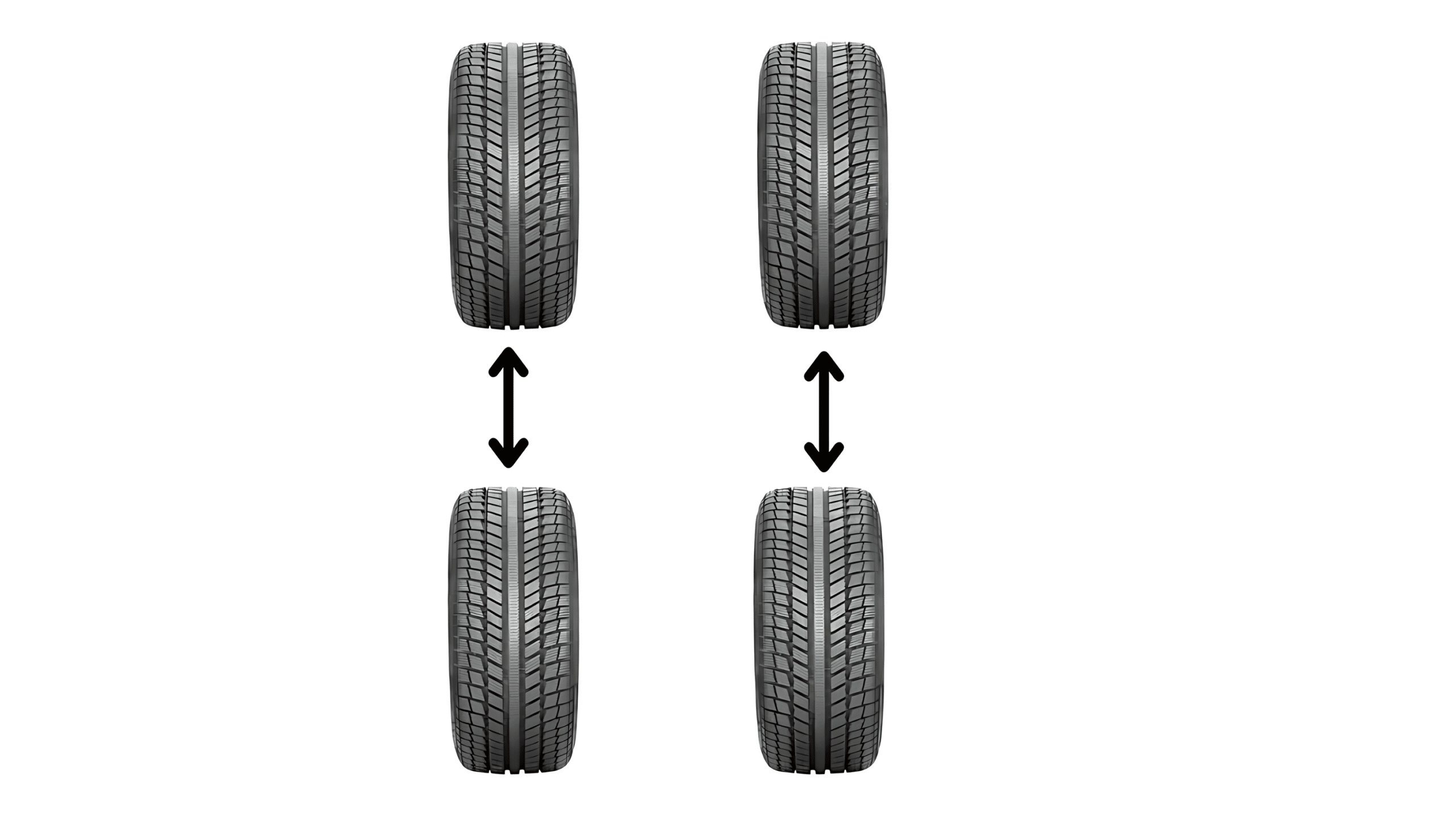
Tires are swapped left to right on the same axle, which is useful for vehicles with different-sized front and rear tires.
5. Front-to-Rear Pattern
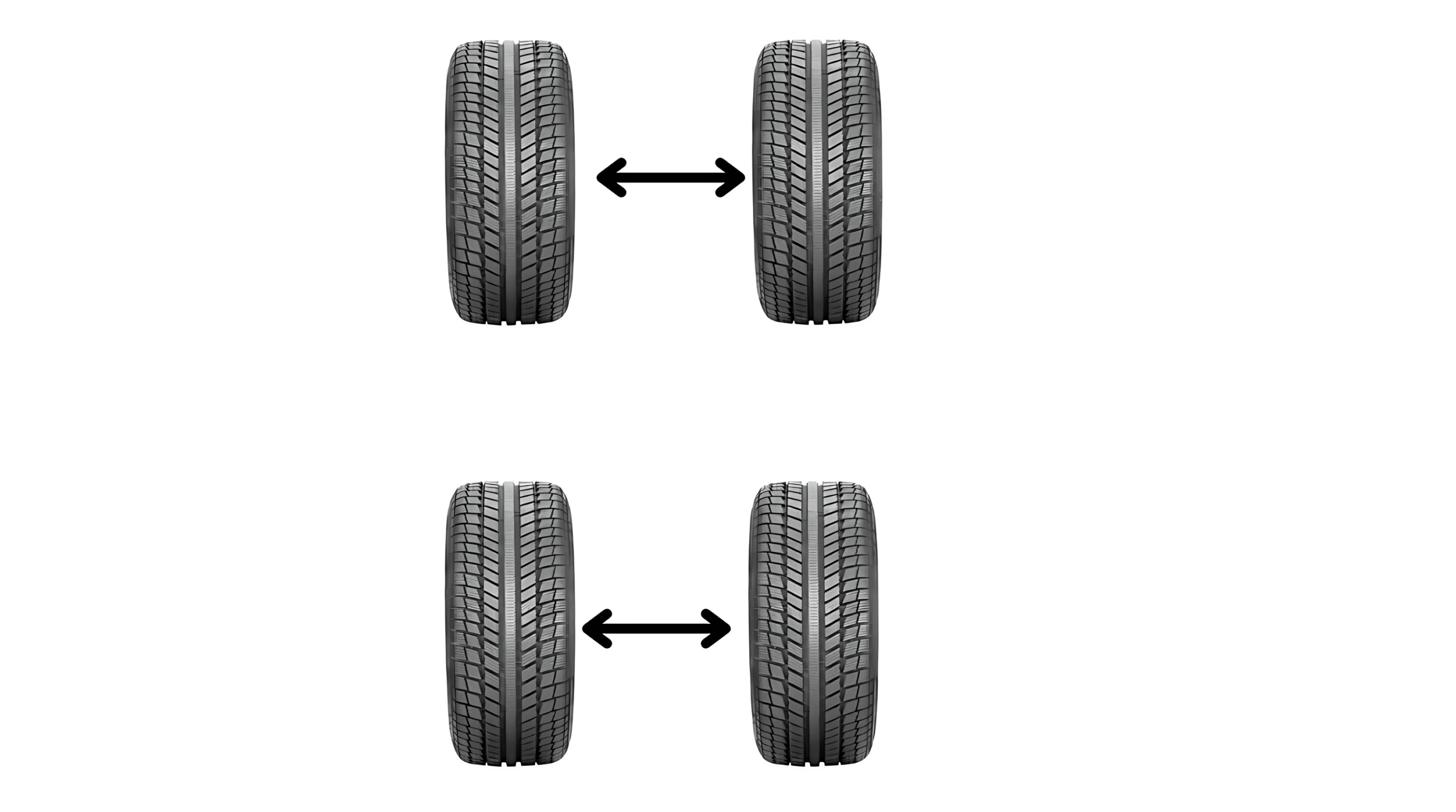
Tires are moved straight forward or backward on the same side, often used for directional tires.
Each pattern serves a specific purpose in AWD tire rotation, helping to distribute wear evenly across all four tires and maintain optimal AWD system performance.
How Often to Rotate AWD Tires
Knowing when to perform AWD tire rotation is as important as knowing how. Here are some guidelines to help you maintain your tires effectively:
Standard Intervals
For most AWD vehicles, rotating tires every 5,000 to 7,000 miles is a good rule of thumb. This frequency helps ensure even wear across all four tires, maintaining optimal AWD system performance. However, always check your vehicle’s owner’s manual for specific recommendations.
Following the Manufacturer’s Guidelines
Vehicle makers provide tailored rotation intervals based on your AWD vehicle’s unique design and needs. Sticking to these guidelines helps you rotate tires at the most appropriate times, potentially avoiding unnecessary wear or mechanical issues.
Seasonal Tire Changes
If you switch between winter and summer tires, use these changes as an opportunity for rotation. This practice ensures both sets wear evenly, especially when reinstalled in the next season. It’s like giving your tires a fresh start twice a year!
High Mileage or Heavy Use
Do you frequently drive long distances, carry heavy loads, or tackle challenging terrains? Your AWD vehicle might need more frequent tire rotations. Monitor your tire wear and consider rotating more often to maintain vehicle stability and longevity.
Remember, regular AWD tire rotation is key to getting the most life out of your tires and ensuring your vehicle performs at its best. When in doubt, consult a professional or your vehicle’s manual for your specific AWD system’s most accurate rotation schedule.
How Tire Type Affects Rotation Pattern Choice
When performing AWD tire rotation, it’s crucial to consider your tire type. Different tires require specific rotation patterns to ensure even wear and optimal performance. Let’s explore the main tire types and their rotation needs:
1. Directional Tires
These tires have a specific direction of rotation, indicated by an arrow on the sidewall. For AWD vehicles with directional tires, rotate them front to back on the same side. This ensures the tire’s tread pattern works as designed, maintaining proper water dispersion and traction.
2. Non-Directional Tires
These versatile tires offer more flexibility in AWD tire rotation patterns. You can use the “X-Pattern,” where you move the front tires to opposite rear positions and the rear tires to opposite front positions. This pattern is often ideal for AWD vehicles as it helps balance wear across all four tires.
3. Staggered Tires
Some AWD vehicles have wider rear tires than front tires, which limits rotation options. If possible, rotate side to side on the same axle. However, consult your vehicle’s manual or a professional, as some staggered setups may not allow rotation.
Understanding your tire type is key to choosing the right AWD tire rotation pattern. This knowledge helps you maintain your tires effectively, ensuring balanced wear and optimal performance for your AWD system.
Signs That Your AWD Vehicle Needs a Tire Rotation
Recognizing when your AWD vehicle needs tire rotation is crucial for optimal performance and safety. Here are some key signs to watch out for:
Uneven Tire Wear: Take a close look at your tires. If you notice some are wearing down faster than others, especially on the edges or center, it’s time for AWD tire rotation. Uneven wear can compromise traction and handling, making your vehicle less safe to drive.\
Frequent or Uneven Pressure Loss: Are you adding air to one or more tires more often than usual? This could be a sign of uneven wear. In AWD systems, tire pressure imbalances can lead to further damage if not addressed promptly. Regular rotation helps maintain even pressure across all tires.
Steering Wheel or Vehicle Vibrations: Your tires might be unevenly worn if you feel vibrations through the steering wheel or vehicle body, especially at higher speeds. This often occurs when one or more tires are out of balance due to improper wear patterns. AWD tire rotation can help restore smooth driving.
Strange Sounds from the Tires: Listen for unusual noises like humming, thumping, or squealing while driving. These sounds can indicate unevenly worn tires, resulting from tread wear patterns that cause the tires to contact the road unevenly. Timely AWD tire rotation can help prevent these issues.
Catching these signs early and performing regular AWD tire rotation can extend tire life, improve vehicle performance, and enhance safety. If you notice any of these indicators, it’s time to rotate those tires!
Conclusion
Regular AWD tire rotation is a crucial aspect of vehicle maintenance that ensures optimal tire performance, safety, and longevity. Car owners can confidently perform this essential task at home by following the guidelines outlined in this beginner-friendly manual.
Understanding the unique needs of AWD systems, recognizing when rotation is necessary, and choosing the right pattern based on tire type are key to successful maintenance. Remember to adhere to recommended rotation intervals and prioritize safety during the process.
With proper tools and techniques, DIY AWD tire rotation becomes achievable, saving money and enhancing the driving experience. By incorporating this practice into regular vehicle care routines, drivers can enjoy improved handling, extended tire life, and peace of mind with a well-maintained AWD system.

